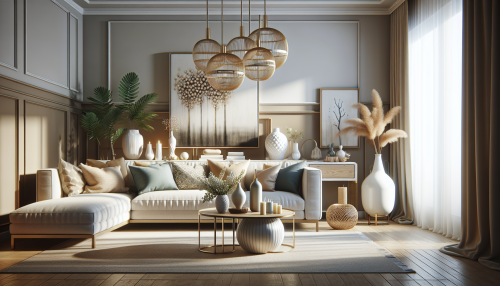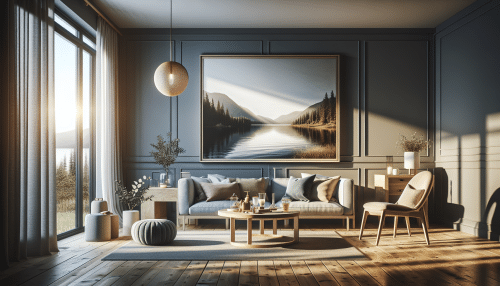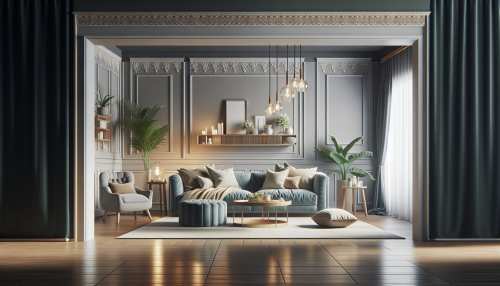Secrets Behind the Rise of Minimalist Homes
Olivia Morgan November 4, 2025
Minimalist homes have captured attention everywhere. Discover the philosophy, practical design ideas, and psychological reasons drawing so many to this lifestyle trend. From decluttering tips to space-saving hacks, see why minimalist living could transform your daily routine and environment.
Understanding the Minimalist Home Movement
Minimalist homes are far more than a fleeting trend; they reflect a broader desire for clarity and simplicity in living spaces. At its core, minimalism emphasizes quality over quantity, focusing on intentional decisions about what items deserve a place in a home. Those who embrace this aesthetic often find themselves prioritizing open spaces, natural light, and neutral tones that soothe the senses. Removing excess isn’t just about appearances—it’s about creating an environment that supports mental relaxation and everyday well-being.
Simplicity in home design can offer relief from over-stimulation. Research backed by interior design experts reveals that surroundings can profoundly affect mood and cognitive function. Minimalist interiors, with their uncluttered surfaces and purposeful furnishings, have been shown to reduce anxiety and enhance focus. When each item in a room is chosen for its necessity or significance, homes become sanctuaries rather than sources of stress. Many attribute clearer thinking and increased energy levels to a decluttered environment.
Minimalist homes are not limited to monochrome palettes or stark emptiness. Intentionality is key. Sometimes, a single work of art or a carefully chosen accent color punctuates a calm backdrop. This encourages mindful living. No longer do people feel overwhelmed by stuff. Instead, daily routines become smoother, with less time spent cleaning or searching for misplaced items. The more homeowners explore essentials-only decor, the more they realize the freedom it brings.
Why Minimalism Appeals to Modern Lifestyles
The appeal of minimalist homes grows in a world saturated with constant noise and countless possessions. Many individuals and families crave stability and straightforwardness, which minimalist living provides. This desire is rooted not only in an urge to simplify but also to maximize the functionality of limited urban spaces. As sustainable living becomes a greater priority, reducing clutter aligns well with eco-friendly goals by curbing unnecessary consumption.
Minimalism embraces functionality and beauty, working hand in hand. Smart storage solutions and multi-purpose furniture allow spaces to work harder and appear larger. The authenticity of this lifestyle is a driving factor, too; people want interiors that reflect who they are, not simply what’s trending. Minimalist spaces allow for self-expression without overwhelming the senses, giving each object genuine meaning.
Technology and remote work have also influenced the way people structure their homes. Having clear, distraction-free zones supports productivity and rest. Those who spend more time at home recognize the positive impact that minimalism has on their time management and stress levels. Cultivating a home that’s easy to maintain and pleasant to inhabit meets both practical and emotional needs, making the philosophy appealing to many age groups and walks of life.
Practical Steps for Creating a Minimalist Home
Embarking on the minimalist journey begins with honest self-assessment. Evaluate each item and room, asking practical questions about necessity and enjoyment. The decluttering process often starts with small, manageable spaces—like a single drawer or closet—before progressing to entire rooms. Organizers recommend tackling visible clutter first, as this provides instant motivation and a preview of the change minimalism can bring to a home’s atmosphere.
Adopting minimalist design does not require expensive overhauls. Sometimes, simply rearranging furniture or investing in a streamlined shelving unit is enough to maximize available space. Wall hooks, nested tables, and under-bed storage are clever ways to eliminate clutter without sacrificing function. Everyday items double as decor—think woven baskets or elegant storage boxes—reflecting both tidiness and aesthetic appeal. Each new design element should serve a clear purpose.
Color palettes play a significant role in minimalist homes. Soft, neutral colors provide a peaceful foundation, while natural materials (wood, stone, linen) add depth and comfort. The focus is on quality and sustainability rather than quantity. Swapping out outdated or unnecessary pieces for timeless, versatile alternatives ensures that every item earns its place. This approach fosters conscious buying habits and a greater appreciation for craftsmanship, setting a solid foundation for long-term satisfaction.
Benefits of Minimalist Living on Well-Being
Living with less can provide a surprising boost to overall well-being. Studies highlight the link between orderly spaces and lower stress levels. An uncluttered environment allows for better sleep, easier cleaning, and more time to focus on meaningful activities. The minimalist approach helps people shed excess obligations, enabling them to spend resources—time, energy, and money—on things that truly matter.
The practice supports mindful routines. When distractions are reduced, it becomes easier to savor everyday experiences. Many homeowners report feeling more reassured in minimalist spaces, as there’s less sensory overload and more calm. This tranquility can extend to personal relationships, as orderly homes facilitate relaxation and positive connection among family members or roommates. Mental clarity often follows physical order, making day-to-day life more harmonious and pleasant.
Minimalism can also have a positive environmental impact. Owning fewer items means supporting more responsible consumption patterns. Many who commit to minimalist lifestyles see themselves buying less frequently and seeking out sustainable, durable goods. Over time, these choices contribute to reduced waste and a lighter ecological footprint—showing that a minimalist home can be a meaningful step towards climate-conscious living and greater individual fulfillment.
Modern Minimalist Home Decor Trends
Current minimalist decor blends simplicity with warmth. Gone are the days of sterile, all-white rooms. Today’s designs favor a mix of textures and subdued earth tones, creating inviting spaces without clutter. Open shelving, modular furniture, and subtle lighting fixtures have become popular throughout living rooms and kitchens. These elements not only look appealing but help to keep essential everyday objects within easy reach.
One notable trend is the use of biophilic design—integrating natural elements, like indoor plants, with minimalist principles. Not only does greenery purify the air, but it fosters a sense of calm and vitality within interiors. Minimalist homes increasingly feature large windows, maximizing daylight and establishing a connection with the outdoors. Simple window treatments and soft drapery elevate the atmosphere without overpowering the senses.
Technology integration is another hallmark of minimalism today. Wireless speakers, smart lighting controls, and streamlined home office setups help maintain clean lines and open surfaces. Hiding cables, choosing multi-functional gadgets, and opting for built-in storage allow spaces to remain both contemporary and uncluttered. By incorporating these details thoughtfully, people maintain comfort and adaptability as their lifestyles evolve.
Challenges and Common Misconceptions
Embarking on minimalism is not without challenges. Letting go of sentimental items or overcoming attachment to material goods can feel daunting. Some mistakenly assume that minimalist homes lack personality or warmth. However, successful minimalist spaces are deeply personal—built around the unique needs and tastes of those who live there. Patience is essential, as meaningful change takes time.
Minimalism does not require giving up comfort or aesthetic pleasures. A common misconception is that minimalist homes are stark and cold. In practice, the opposite is true when design choices are intentional. Layering textures, keeping cherished items on display, and using cozy textiles preserve comfort while minimizing clutter. Informed choices and creativity make it possible for minimalist interiors to balance practicality with beauty.
This lifestyle is not a rigid rulebook but a flexible philosophy. There is room for favorite collections or special decor, so long as they are meaningful and not overwhelming. The objective is not perfection. Instead, it’s about continuous improvement. Recognizing that minimalism looks different for everyone can help prevent frustration and support ongoing satisfaction, no matter the starting point.
References
1. Minimalism: A Documentary About the Important Things. (2016). The Minimalists. Retrieved from https://www.theminimalists.com/film/
2. American Psychological Association. (n.d.). Declutter your space, declutter your mind. Retrieved from https://www.apa.org/news/press/releases/declutter
3. Psychology Today. (n.d.). How Minimalism Can Improve Mental Health. Retrieved from https://www.psychologytoday.com/us/blog/how-minimalism-can-improve-mental-health
4. The Spruce. (n.d.). How to Start Minimalist Living. Retrieved from https://www.thespruce.com/how-to-become-a-minimalist-4161135
5. Harvard Health Publishing. (n.d.). The Health Benefits of Decluttering. Retrieved from https://www.health.harvard.edu/mind-and-mood/the-health-benefits-of-decluttering
6. Elle Decor. (n.d.). Modern Minimalist Home Decor Trends. Retrieved from https://www.elledecor.com/design-decorate/trends/g19680446/minimalist-home-decor/





